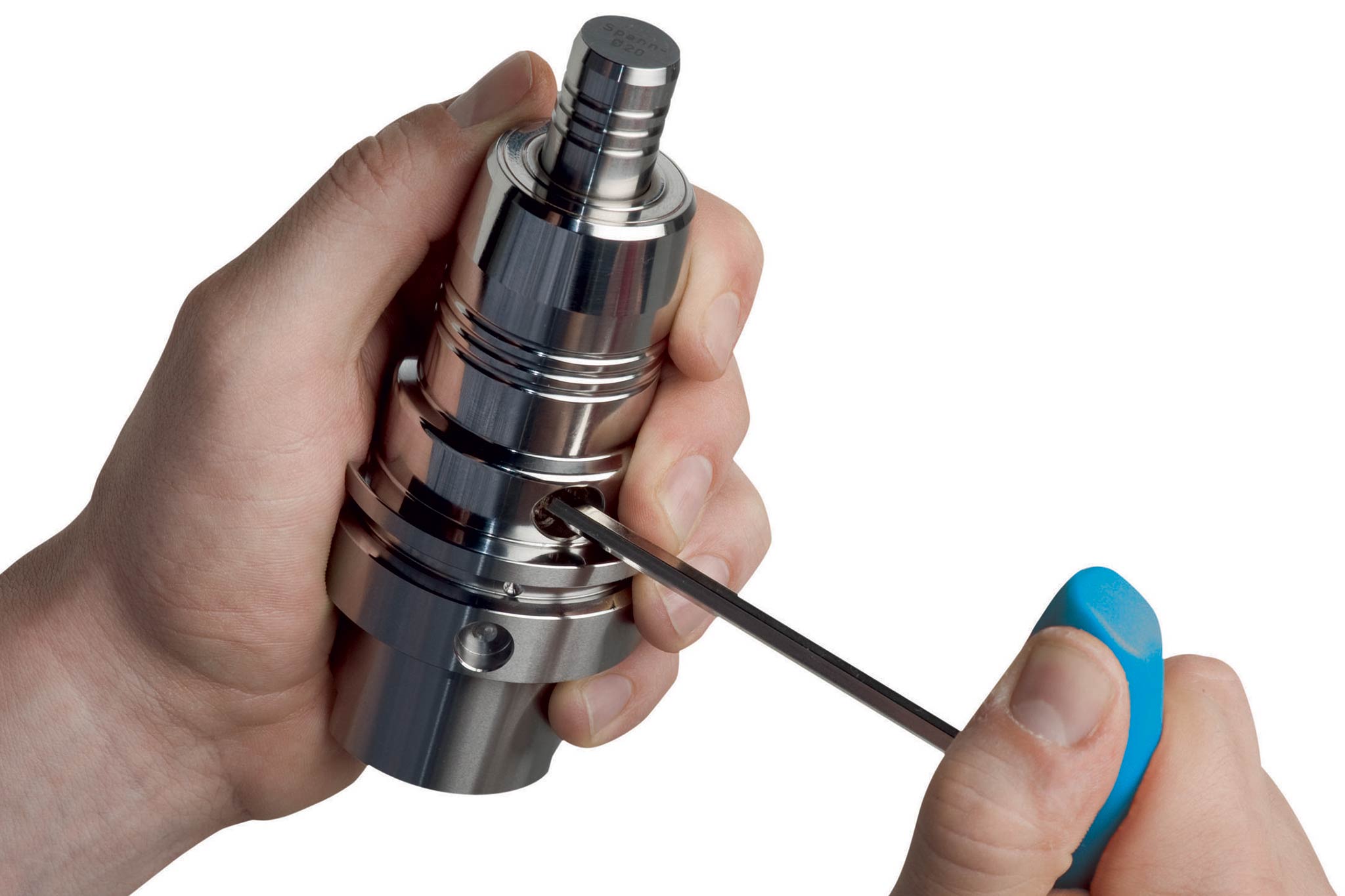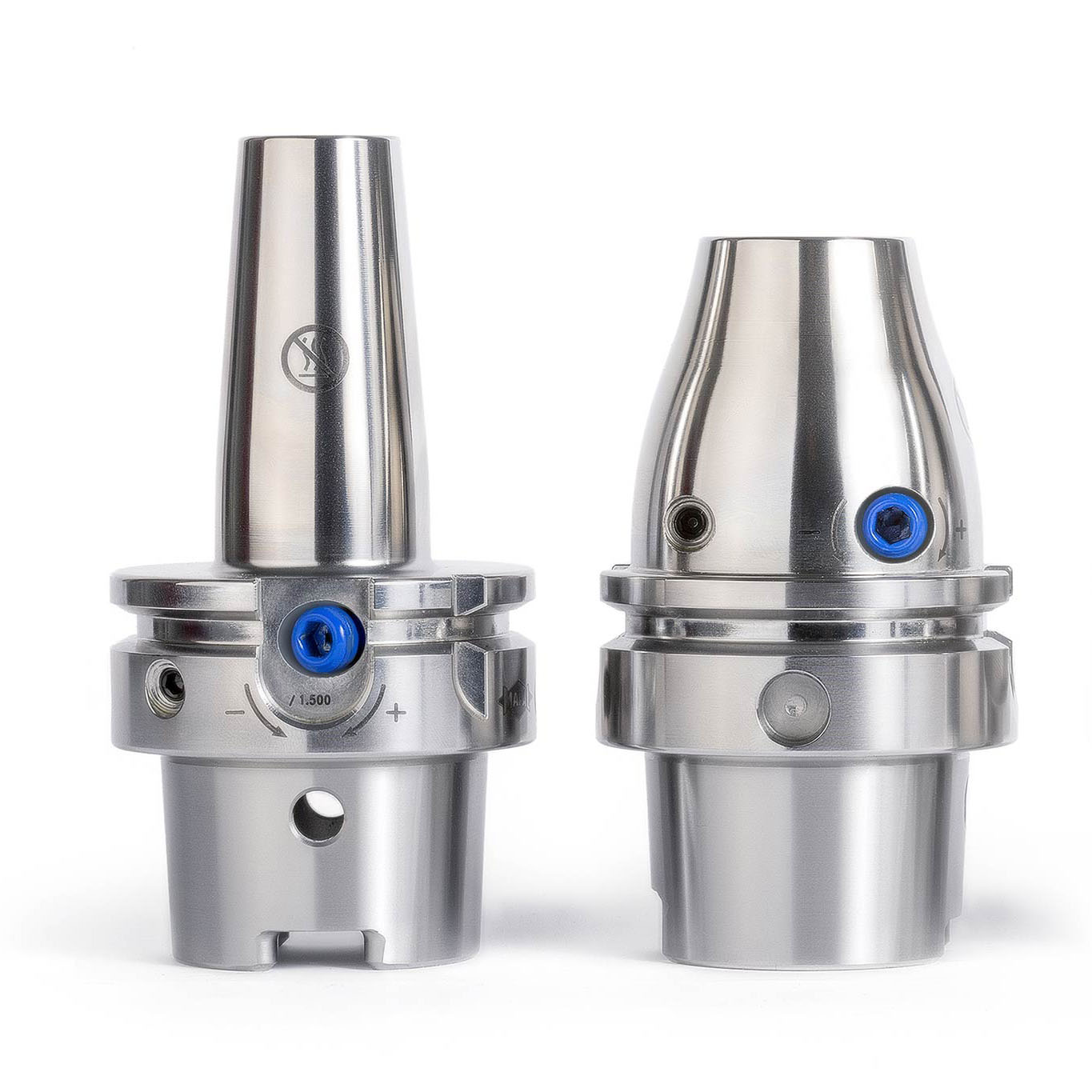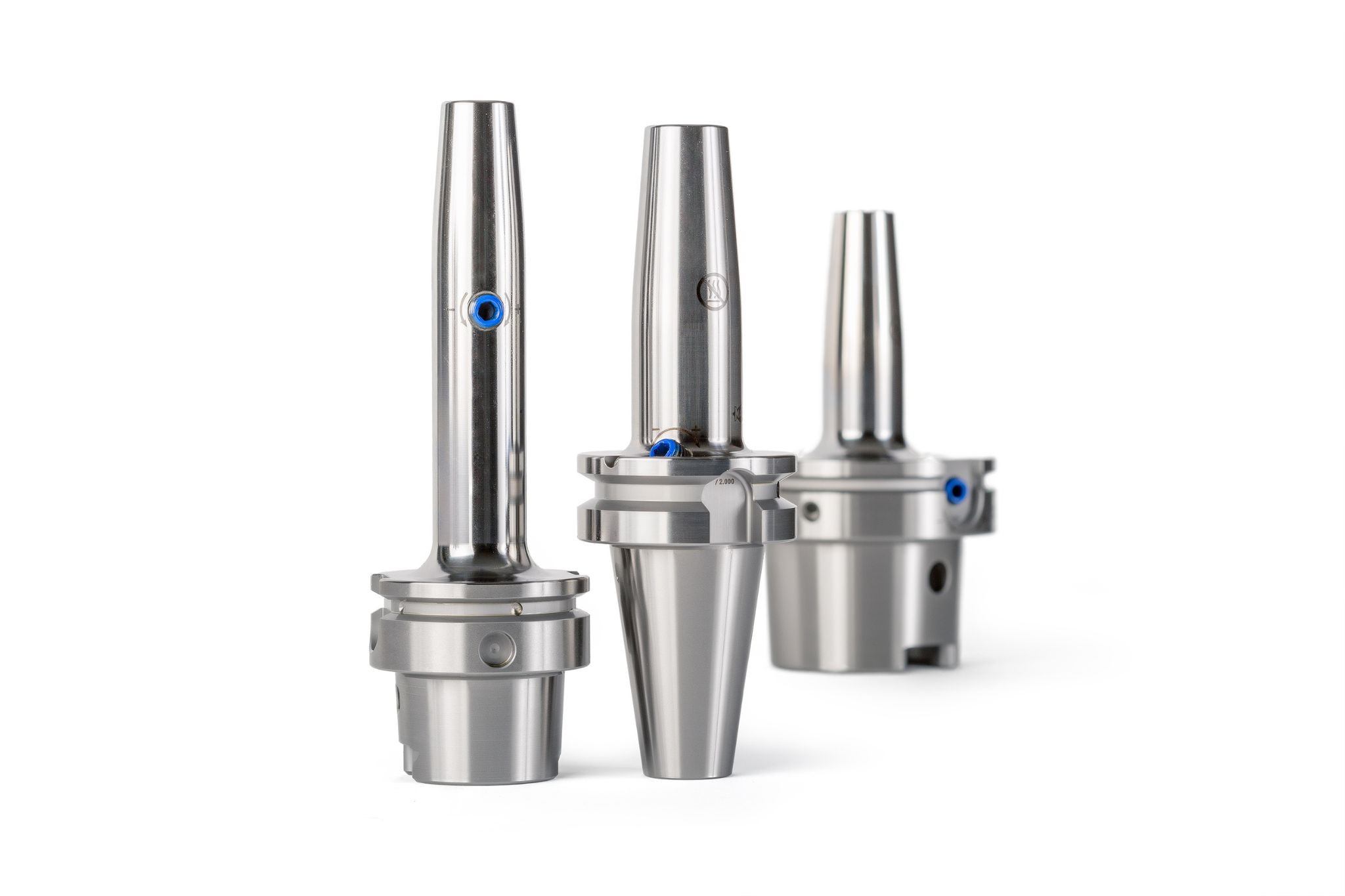10.10.2024
Longer tool life, less energy consumption
More sustainable machining with hydraulic chucks
It has become imperative for manufacturers to make production both climate-friendly and profitable. Process-integrated measures must be taken to minimise pollutant emissions and the use of resources, while at the same time protecting and easing the burden on employees – this is the only way companies can prepare for the challenges of the future. Hydraulic expansion technology can contribute to ecological, economical and social improvements for machining companies.

MAPAL and SCHUNK have the common goal of sustainability

An asset to the future: hydraulic clamping technology in machining
Many users in the metalworking sector have long been won over by this technology, which enables them to machine parts economically, efficiently and in a way that conserves resources. Hydraulic clamping toolholders are available on the market for every application. With this method, tools are clamped by a hydraulic mechanism where a screw is tightened to compress the internal pressure medium, causing the expansion sleeve to deform elastically. In this way, the tool shank is enclosed tightly. The high tension and radial rigidity make for a reliable hold and precise radial run-out.
SCHUNK and MAPAL each have decades of experience with this technology. Customised toolholder segmentation provides customers with the perfect hydraulic chuck for their specific requirements and application. All chucks are fine balanced as standard and are suitable for high spindle speeds. “Hydraulic clamping technology significantly supports companies in the machining industry on their decarbonisation journey”, emphasises Matthias Brenner, Director Product Sales & Product Management Clamping Technology at SCHUNK. “Industry, the economy and society at large must meet the urgent demand for lower emissions, energy consumption and use of materials”, Brenner says. “If the goal is sustainable production, you have to employ every possible measure to reduce your CO2 emissions. This includes new climate-friendly products and services as well as lowering emissions in your own factory as well as along the supply chain.”
“The use of hydraulic clamping technology contributes to sustainable production in ecological, economic and social terms”, affirms Dennis Minder, Global Head of Product and Application Management Clamping Technology at MAPAL, adding: “When it comes to sustainability, a major advantage of hydraulic chucks is a much longer tool life. If you want to manufacture responsibly, then you should consider switching to hydraulic clamping technology. For new purchases, hydraulic chucks are your first choice from a sustainability perspective.”

Significant increase in workpiece quality and chuck tool life
Hydraulic clamping technology features a design that stands for resource conservation and process reliability. The consistently radial run-out accuracy of a hydraulic chuck and effective vibration damping thanks to the inner oil cushion yield optimal workpiece surfaces, prevent micro chipping, protect the machine spindle, and result in longer tool life. This means that metalworkers benefit directly from cost savings and better quality. With hydraulic clamping technology, the radial run-out accuracy, clamping force and torque remain constant throughout the machining process. This process reliability protects both the workpiece and the equipment, especially the cutting edge. The overall result is a reduced need for follow-up steps, both on the workpiece and during machining setup.
Compared to shrink chucks, which are put under a significant amount of stress through constant warming and cooling, hydraulic chucks last much longer. As thermal stress is not a factor here, there is no material fatigue. “We at MAPAL have verified the longer tool life through comparisons”, explains Minder. “While shrink chucks lose their initial part quality after about 500 clamping cycles, a modern UNIQ hydraulic chuck can withstand between 10,000 and 15,000 cycles, maintaining its quality for the user.” This durability conserves resources, as metalworkers can use the equipment reliably for many years. Hydraulic chucks also perform well in terms of servicing and reconditioning thanks to the ability to replace installation parts and add hydraulic oil. This makes them ready for a second life and fit for another 10,000 to 15,000 machining cycles. “Hydraulic clamping technology is a highly effective lever for economic efficiency and material savings”, emphasises Brenner. Eliminating rejects directly reduces CO2 emissions, as resources that should not be wasted are already bound up in the valuable raw material. “The throwaway mentality is coming to an end. Hydraulic chucks directly support this change, as they are designed for long-term use”, says Brenner.

Easy part handling benefits employee safety

Significant energy savings compared to shrink chucks
In addition to long tool life, resource conservation and occupational safety, hydraulic clamping technology also offers greater energy savings compared to the use of shrink chucks. Unlike shrink chucks, hydraulic chucks require no energy, which directly translates into a significant reduction in CO2 emissions. “A strong argument for switching to hydraulic clamping is the high energy requirements for shrinking”, explains Minder. “Moving beyond heat shrinking eliminates all energy consumption, reduces CO2 emissions and lowers energy costs”, says the MAPAL specialist. “In our own factory, we ascertained that a shrink unit used in three shifts per day can consume between 10,000 and 12,000 kilowatt hours per year, making it a real power guzzler”, notes Minder. “A hydraulic chuck is much more efficient. Every reduction in our energy consumption brings us one step closer to meeting our sustainability targets!”
The use of hydraulic clamping technology in machining processes touches on many of the dimensions of sustainable production – from conserving resources, starting with raw material and energy consumption, to improved working conditions for employees that lower their workload. Improving existing processes in the daily operations is an important lever for making product manufacturing in all sectors more resource efficient. It is imperative that operators look at all areas of resource use to identify and eliminate all sources of waste. Even small changes in the production process can have quick and noticeable results with little engineering effort. By using hydraulic chucks, users can directly reduce CO2 emissions and meet their climate targets – during operation and without time-consuming re-tooling. The geometry of hydraulic chucks such as TENDO Slim 4ax (SCHUNK) and UNIQ DreaM 4.5° (MAPAL) is exactly the same as that of shrink chucks, so they can be replaced 1:1 without any programming. It’s never been easier to make the change.
Pooled communication

Contact
Kathrin Rehor Public Relations Kathrin.Rehor@mapal.com Phone: +49 7361 585 3342



